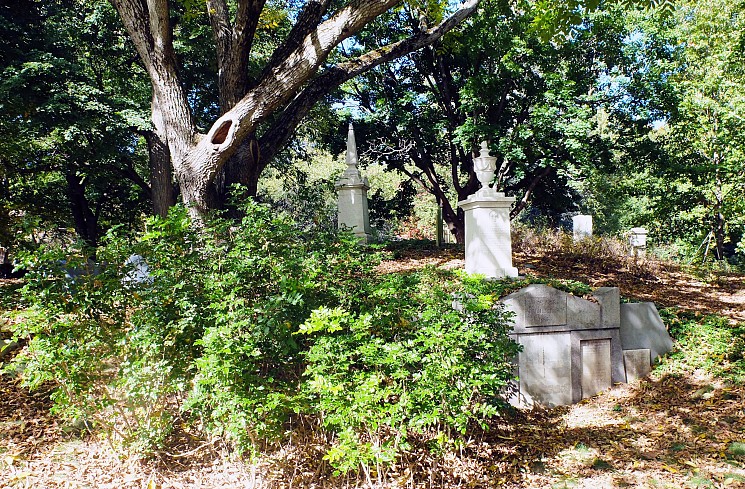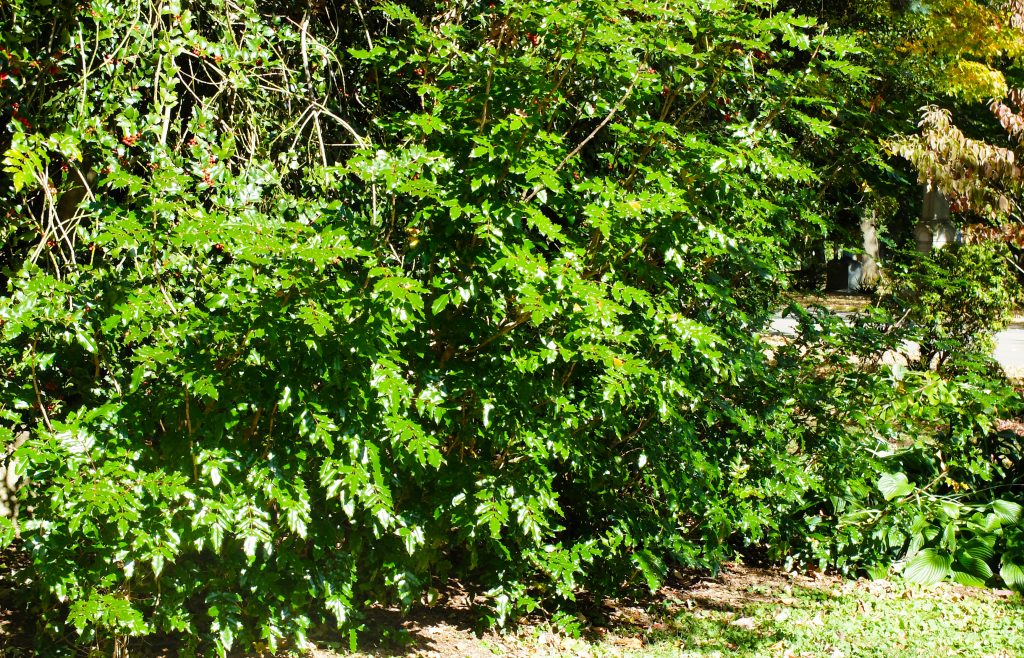Oregon Grape

The greatest service which can be rendered any country is to add a useful plant to its cultivation. – Thomas Jefferson
Oregon Grape, Mahonia aquifolium is a good example of Jefferson’s (1743-1826) oft-stated opening quote. This plant of contemporary usage was introduced as part of our country’s early botanical exploration.
Today we may add Oregon Grape to a list of more well-known evergreen shrubs such as rhododendron, mountain laurel, yew and pieris. Averaging 3 to 6-feet high and wide, its distinct alternate compound leaves are composed of 5 to 9 shiny, stiff, leaflets, each 1 ½-to-3 ½-inches long with spines on the tip and margin. Bright yellow, slightly fragrant flowers occur in mid-to-late April, about the same time as some of our flowering magnolias and cherries. Later in August-September these flowers may produce dark-blue berries, looking somewhat akin to grapes, hence the common name. Fruits may be used for jellies, wines and were historically part of traditional diets of indigenous Pacific Northwest peoples.
Native from southeast Alaska to northern California this is one of about 70 species within the genus Mahonia which occur in North and Central America, eastern Asia and the Himalaya. Within the BERBERIDACEAE, the barberry family, there is ongoing research study as to whether Mahonia should be reclassified within Berberis instead.
Taxonomy aside, the genus name commemorates Bernard McMahon (1775-1816), Irish-American horticulturist of Philadelphia, who created a successful early nineteenth-century seed business. This seed-shop and general nursery attracted extensive correspondence from the U. S. and abroad. Jefferson also quoted as, “But though an old man, I am but a young gardener”, was one of these regular correspondents, and received seeds from McMahon for Monticello.
In 1803, as president, Jefferson with congressional funding commissioned the Corps of Discovery. Naming his personal secretary Meriwether Lewis (1774-1809) its leader, who in turn chose William Clark (1770-1838) as his partner. This exploration of the Louisiana Purchase was scientific and commercial, leaving St. Louis in May 1804 and not returning until September 1806.
The importance of Philadelphia in early American botany is strongly represented by Benjamin Smith Barton (1766-1815), physician, professor of natural history and author of Elements of Botany, this country’s first textbook on botany. Jefferson sent Lewis to Philadelphia to study botany with Barton including how to press and dry plants for eventual classification as herbarium specimens. [Mount Auburn’s visionary founder, Jacob Bigelow (1787-1879), in 1809 studied medicine (and plants) at the University of Pennsylvania, under the tutelage of Barton, professor of materia medica.]
Oregon Grape, Mahonia aquifolium is one of 226 pressed and dried extant original specimens in the Lewis and Clark Herbarium at the Academy of Natural Sciences in Philadelphia. Unknown numbers of others were destroyed by waters, insects, mold and/or lost in transit.
After Lewis returned he turned over plant specimens to Frederick Pursh (1774-1820), German-American botanist, then living with and recommended by McMahon as best suited to write formal botanical descriptions. In 1811 Pursh published Flora Americae Septentrionalis extensively from Lewis’ collections.
On a future visit to Mount Auburn look for Oregon Grape, Mahonia aquifolium on Walnut Avenue, Swan Avenue, Arborvitae Path, Hydrangea Path and the boundary wall opposite Vesper Path.












Leave a Reply